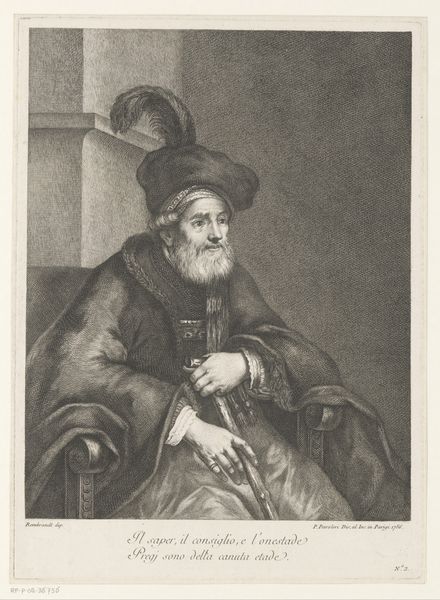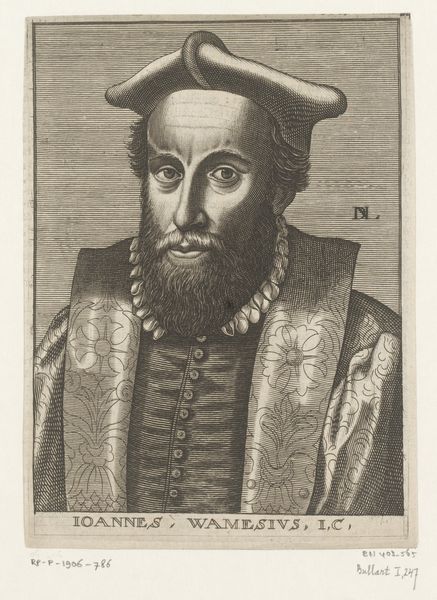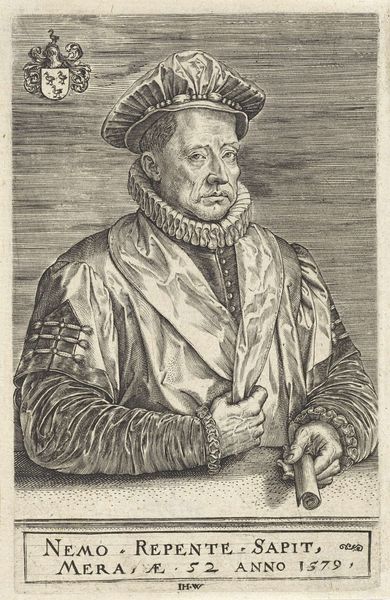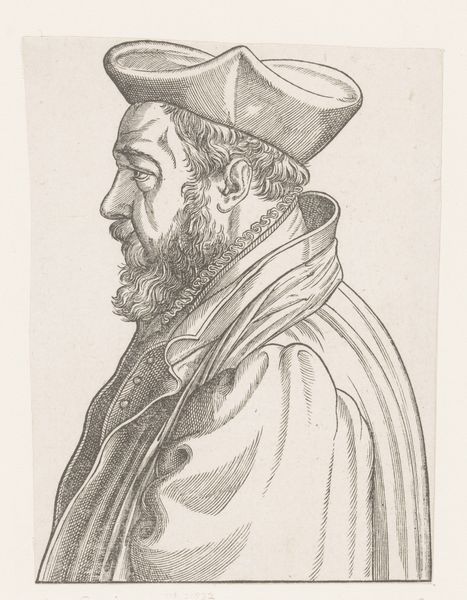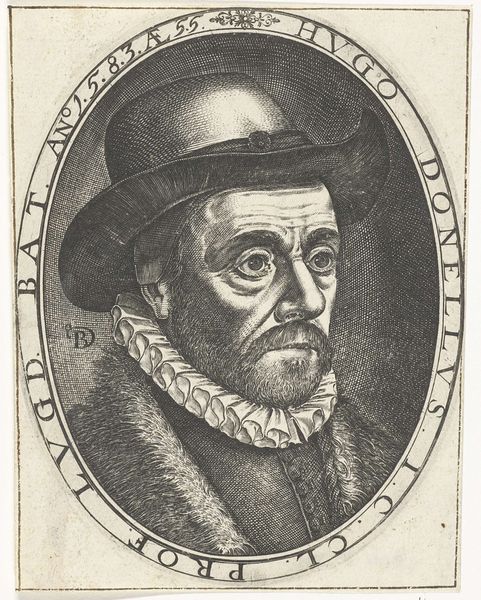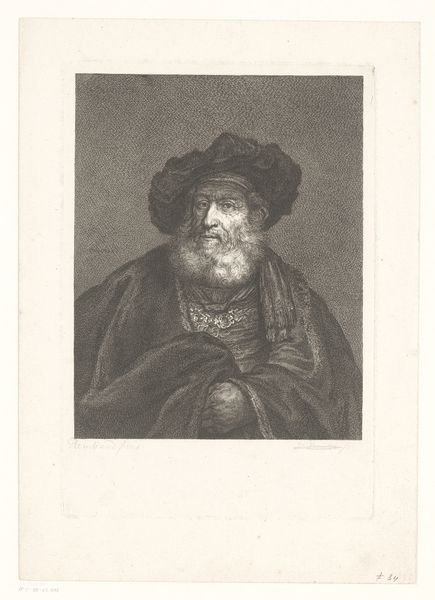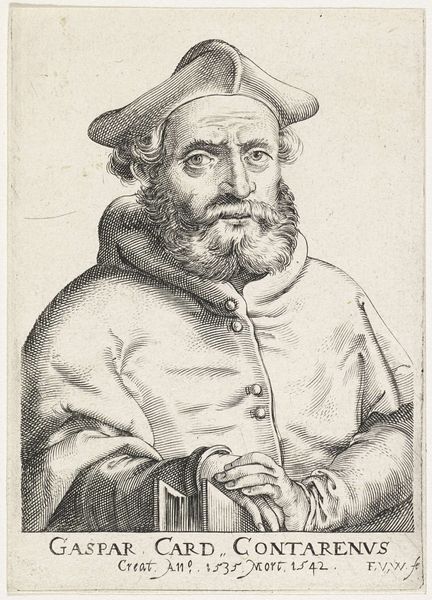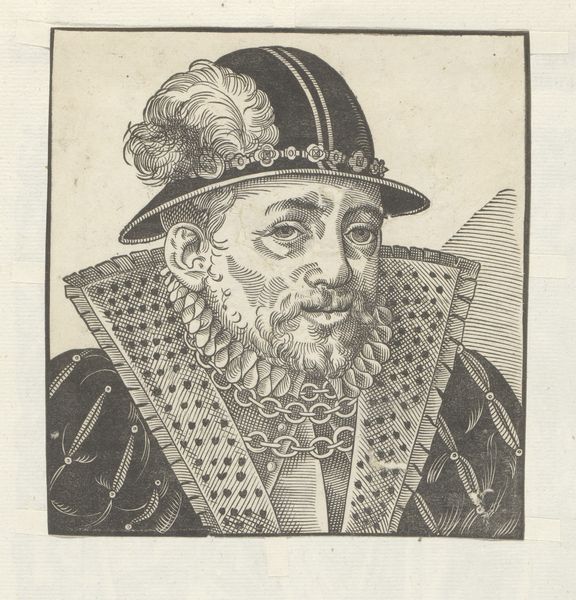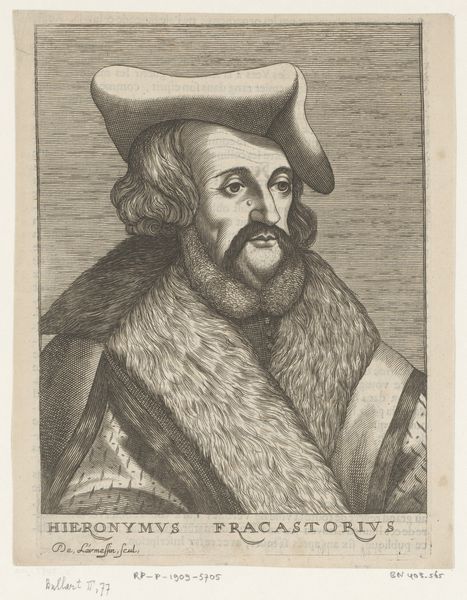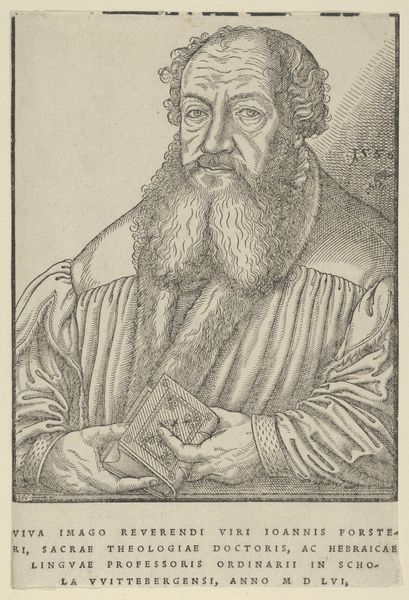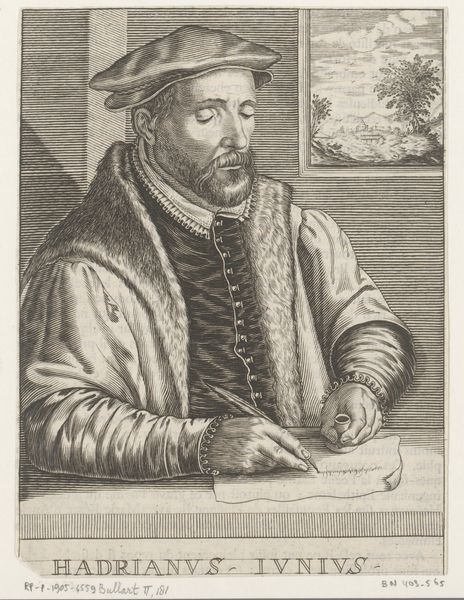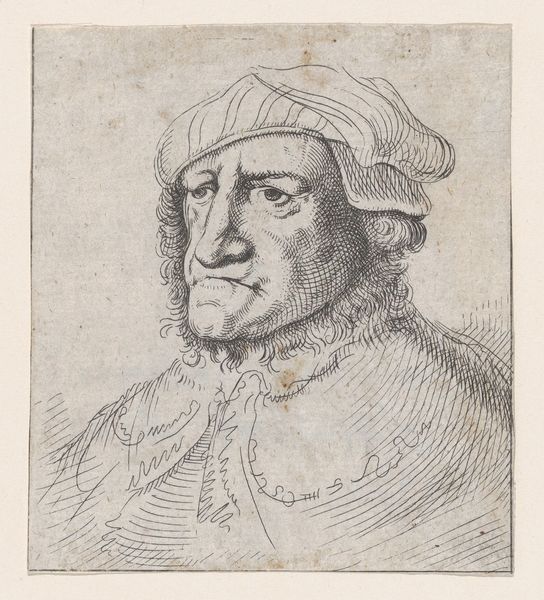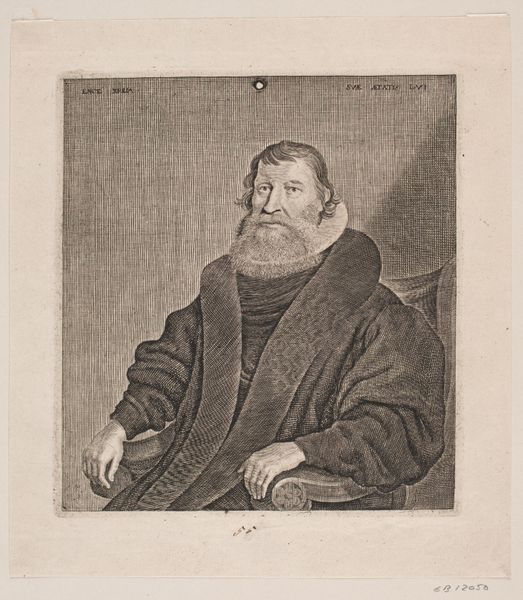
drawing, print, engraving
#
portrait
#
drawing
#
facial expression drawing
#
baroque
# print
#
caricature
#
figuration
#
line
#
portrait drawing
#
engraving
Dimensions: Sheet: 5 3/16 × 3 5/8 in. (13.2 × 9.2 cm) cut on and fractionally within the platemark
Copyright: Public Domain
Curator: Immediately, I get this sense of somber gravitas. There’s a weightiness in the gaze and those luxurious furs. Almost imposing, don't you think? Editor: Indeed. We're currently observing Wenceslaus Hollar's "Sir William Butts," an engraving from 1649 now residing at the Metropolitan Museum of Art. Technically, it is a masterful display of line work; observe how Hollar varies the density and direction of the lines to sculpt form and create tonal variation, thus defining textures from the velvet cap to the stubble on Sir William's chin. Curator: The way those fine lines build up such a palpable sense of texture, it’s really astonishing. Almost like you could reach out and feel the plush of that fur stole. What a character, though. He definitely seems like he wouldn't suffer fools gladly. A real presence. Editor: One might argue that such intensity aligns with the stylistic conventions of the Baroque portrait. Notice how the somber palette and meticulous detail serve to capture not just a likeness, but also a certain psychological depth and status of the sitter. Curator: Absolutely. Though there's also something faintly humorous in that puffed-out face and rather severe expression, a subtle undercurrent of… perhaps self-importance? I'm quite taken with the way he carries himself. Like a Renaissance rock star, almost! Editor: An intriguing observation. Perhaps this is evidence of what some theorists would call "performativity"— the subject consciously projecting a desired image for posterity, actively collaborating in the creation of their public persona within the constraints of social expectations. The choice of attire, the controlled expression— all are deliberately employed semiotic codes. Curator: I suppose in the end every portrait's partly a mask, an invented role. This one just happens to wear its mask with particularly fabulous furs and a most uncompromising gaze. Editor: A fitting point on which to conclude. The work, ultimately, leaves us to reflect upon the inherent ambiguities of representation and the enduring power of the artist's hand. Curator: Here's to Hollar and his subjects: may their fabulous, faintly ludicrous portraits continue to spark such stimulating conversation.
Comments
No comments
Be the first to comment and join the conversation on the ultimate creative platform.

